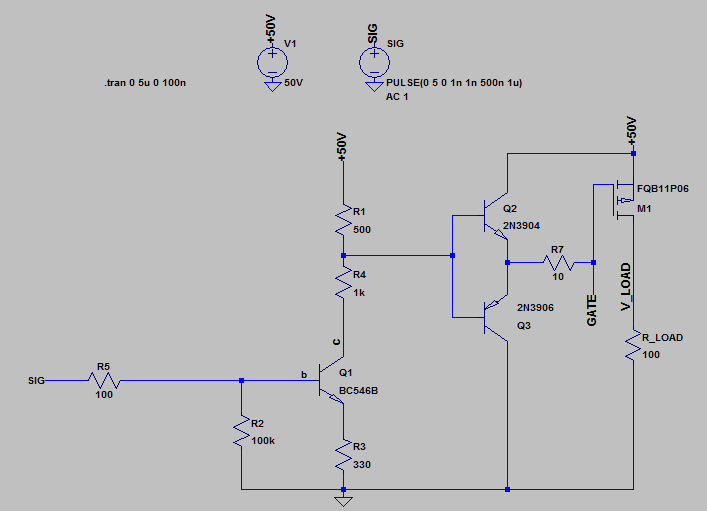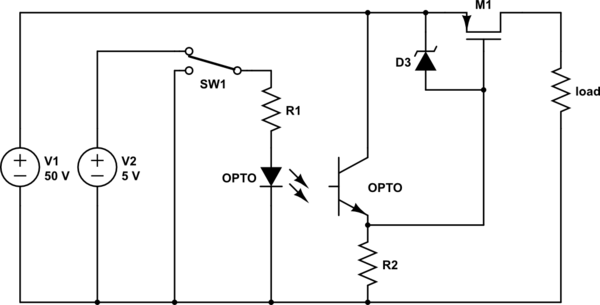Problem: I have a logic signal (represented by SW1), say from a microcontroller, that is either 0V or some low voltage, maybe 5V or 3.3V. I have a higher voltage supply (V1) and a switching device (M1) on the high side of that supply, connected to a load.

simulate this circuit – Schematic created using CircuitLab
Sometimes, there is an H-bridge, or half an H-bridge, and I need to control the high-side transistor(s) (M2), but I think basically it's the same problem:

The difficulty is that my logic output is only 0V or 5V, but I need higher voltages, like maybe 50V and 45V, to switch the high-side transistor. I understand that the precise voltages required will depend on the transistors I select -- I'm just wondering how to solve this problem, generally.
Is there a simple way to do this if my application is not very demanding? If I need to do the switching rapidly, say for a PWM application at 50kHz, is there a more complicated way to do it?



 How about a pull-up for the M1's gate (the P-FET) and an N-FET (M2) from that gate to ground? If you power M2 you pull M1's gate low, switching it on. If M2 is off the pull-up resistor ensures M1 is switched off.
How about a pull-up for the M1's gate (the P-FET) and an N-FET (M2) from that gate to ground? If you power M2 you pull M1's gate low, switching it on. If M2 is off the pull-up resistor ensures M1 is switched off.


